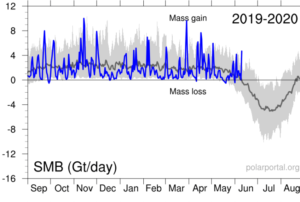by IRM, 2020
Nos observations historiques d’inondations font l’objet de trois articles. Voici le premier qui traite des inondations jusqu’à la fin du 19ème siècle.
En août 2019, nous avons introduit la possibilité d’envoyer vos propres observations via notre application météo. Cette nouvelle fonctionnalité semble avoir plu aux utilisateurs de notre app, puisque nous avons reçu près de 600.000 observations jusqu’à présent ! Etant donné ce succès, nous avons décidé en avril 2020 d’y ajouter deux nouveaux types d’observations à rapporter : les inondations et les phénomènes optiques. Ces phénomènes ont été observés de tous temps, c’est pourquoi nous avons décidé de nous plonger dans plus d’un millénaire d’anciennes observations de halos et d’arcs-en-ciel. Dans ce nouvel article, vous trouverez quelques observations d’inondations telles qu’elles ont été perçues et décrites dans d’anciens manuscrits, livres et journaux publiés en Europe de l’Ouest jusqu’au 19ème siècle.
…

…
See also Observations historiques d’inondations (deuxième partie)
and Observations historiques d’inondations (troisième partie)



